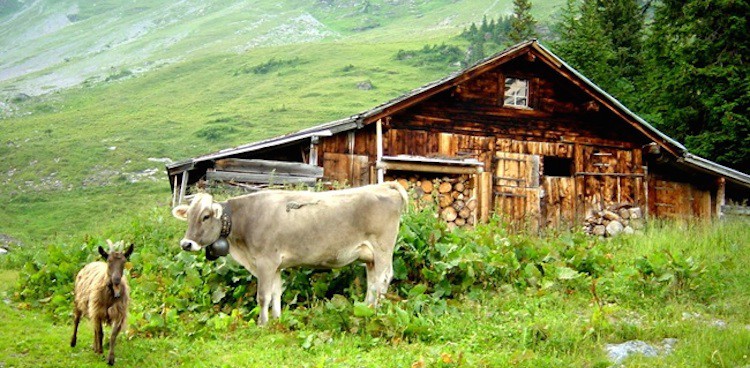
It’s no secret that Central France does one hell of a PR job, convincing us all that their bloomy products are some of the top cheeses in the world. And they wouldn’t be wrong. But before we find ourselves sucked into the region’s publicity vortex, ready to crown Brie as king, let’s resist such hyperbole and take a trip Eastward to Jura, where strong, sturdy, and slightly less flashy Comté is produced. While we’re at it, let’s hop the border to Switzerland, and reconsider the unique and understated qualities of some of our favorite Alpine cheeses.
Alpine cheeses refer to cheese from the mountainous borders between France, Switzerland, Austria, and Italy and include such varieties as Appenzeller, Gruyere, Comte, Abondance, and Emmentaler. Alpine cheeses are generally made from raw or heated cow’s milk, are semi-firm to hard in consistency, and are aged in huge wheels that weigh upwards of twenty pounds.
Though Alpine-style cheeses produced elsewhere can be made to mimic the appearance and consistency of certain Alpine cheeses (that sweet, slightly gummy, hole-freckled, generically-named “Swiss” cheese you can buy in slices at the supermarket is modeled after Emmentaler), true Alpine cheeses gain their flavor from their native land. The cows feed on grasses and wildflowers native to the region that give their milk a distinct floral flavor nearly impossible to reproduce. For example, we can attribute the subtle flavor fluctuations of Comté to the specific time and place within the region where in was produced. As The Kitchn explains:
…each round of cheese has a very distinct terroir — that certain stamp of flavors and aromas that marks it as coming from a very particular place. Furthermore, the milk is delivered to the cheese maker daily and has to be used immediately, so cheeses also get a seasonal stamp. Summer Comté and winter Comté, Comté from the mountains and Comté from the plains — each will be different and no two wedges will be quite the same.
If you’re a home cook (or a chef!), it’s worth getting to know Alpine cheeses — they’re wildly versatile in the kitchen. While their firm consistency and deep, nutty taste is wonderful experienced straight-up, the cheeses also respond well to melting, as in fondue or between the slices of a grilled cheese.
So while it’s always fun to seek out the newest, hottest starlet in the cheese scene, don’t overlook your dependable, high-quality Alpine cheeses. They may be bred on mountain tops, but they’re certainly not over-the-hill.



